di Marta Lock
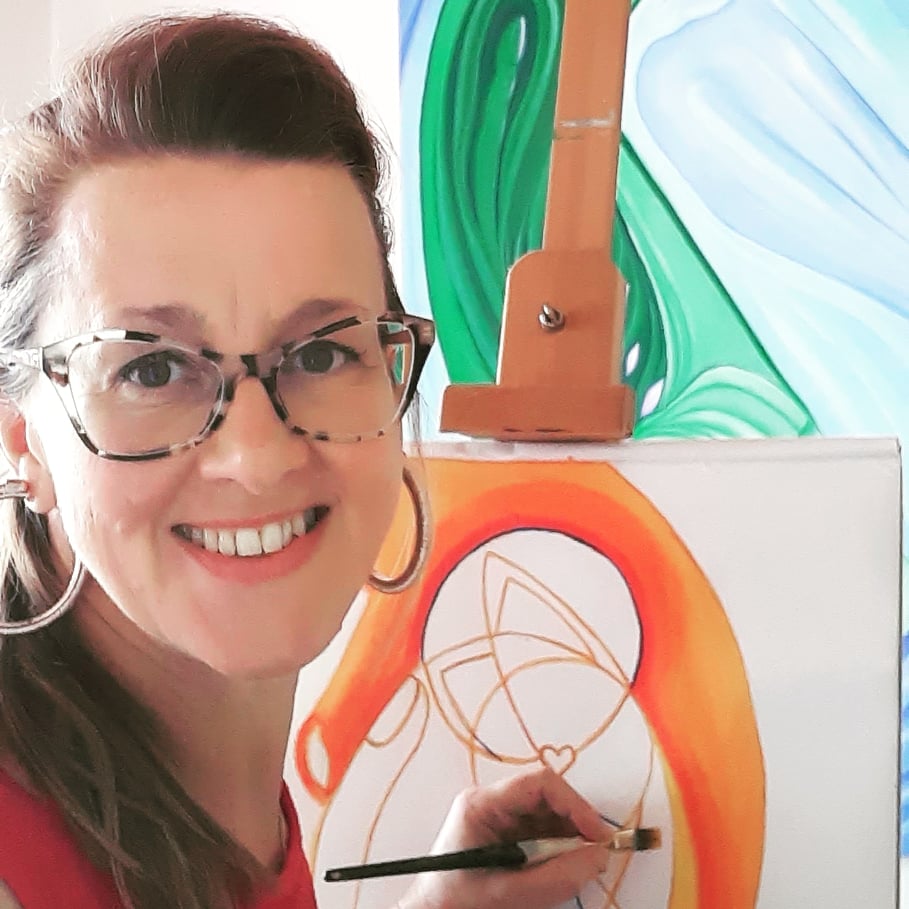
Vania Maso
Veneta, sognatrice, entusiasta della vita e di tutto ciò che normalmente viene percepito come ordinario che invece sotto il suo sguardo prismatico si trasforma in un mondo e in un’esperienza straordinari, Vania Maso intraprende il cammino artistico da autodidatta, ascoltando quell’irrefrenabile impulso espressivo che non può rimanere in silenzio riposto in un angolo della sua vita. Con il passare del tempo il desiderio di perfezionare la sua tecnica istintiva e il bisogno di apprendere i segreti dei maestri sul colore e sul tratto pittorico si fa sempre più incalzante, così si iscrive a molteplici corsi tenuti da grandi artisti della sua zona, apprendendo a usare in maniera più professionale quella tavolozza cromatica che faceva già parte del suo stile. Malgrado da quella fase in avanti il suo approccio sia inevitabilmente più accademico, non rinuncia a perseguire un percorso espressivo del tutto personale, perché ha già sperimentato quanto per lei sia importante stimolare la connessione con il proprio inconscio, con quell’inclinazione naturale che la fa tendere verso una gamma cromatica insolita, vivace e positiva, e verso forme indefinite che solo apparentemente mantengono un tratto figurativo ma che in realtà si spingono verso un immaginario somigliante più a un universo surreale che a qualcosa di osservabile nella quotidianità. Il legame indissolubile è quello che rende possibile l’impossibile e viceversa, quello in grado di osservare una quotidianità completamente differente, colorata, un sogno realizzabile grazie alla capacità di liberare le emozioni e le sensazioni che consentono all’artista di guardare tutto attraverso il filtro dell’anima. Ma più di tutto il resto, ciò che è essenziale per Vania Maso è lasciar emergere la sua personalità eclettica e al tempo stesso riflessiva, la sua sensibilità e il suo senso pratico, il mondo materiale che non può distaccarsi da quello spirituale perché è nel dualismo che la sua indole caratteriale e creativa trovano realizzazione; di contro dal punto di vista dell’approccio pittorico quella tendenza a unire le sue due anime, una più concreta e l’altra più sognatrice, viene superata grazie a una semplicità e un’immediatezza che svelano non solo il carattere solare dell’artista bensì anche il suo punto di vista sul mondo, sull’evoluzione necessaria a scoprire ogni giorno il bello che offre. Le forme nascoste nella non forma inducono l’osservatore ad approfondire, senza fermarsi alla piacevolezza dei colori che come in un prisma sfaccettano e contraddistinguono le tele della Maso, bensì spingendosi dentro le forme indistinte e misteriose che a guardare meglio celano frammenti di realtà conosciute; ecco dunque che entrare nel mondo fantastico dell’artista diviene un viaggio affascinante, un’esperienza in cui sono coinvolti i sensi ma anche la mente che è stimolata a indagare sui significati che appartengono all’anima, al sentire dell’autrice dell’opera. Il dipinto Volo libero
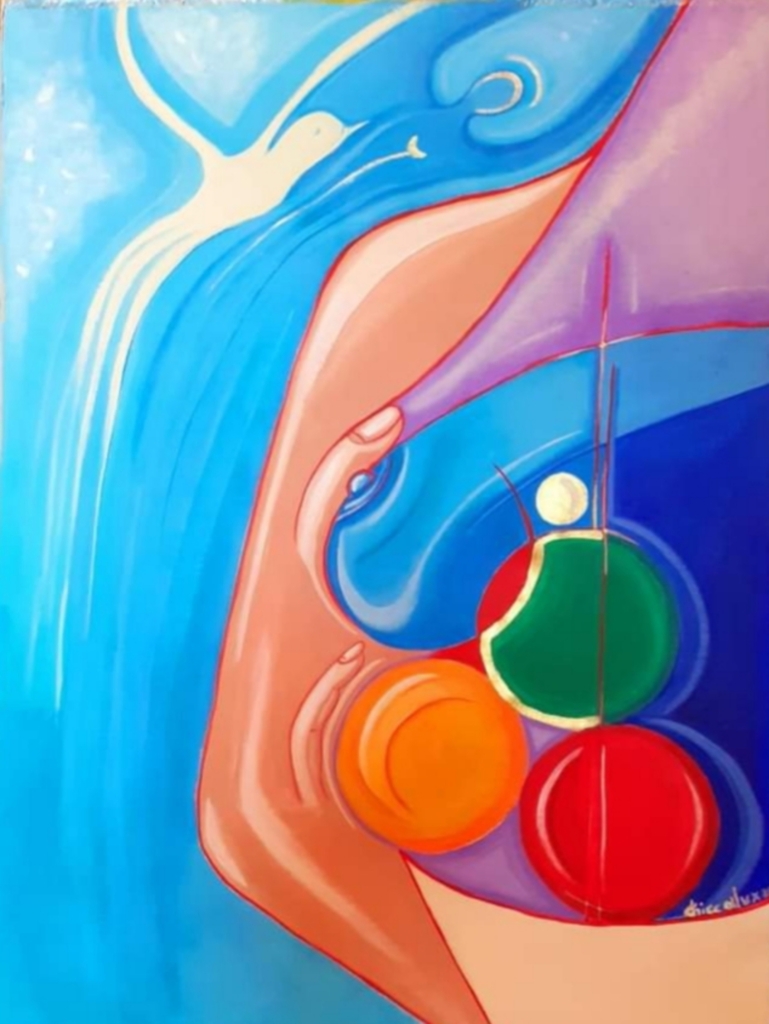
Volo
sembra essere perciò un’estensione della personalità di Vania Maso, dell’essenza che le appartiene e da cui non può prescindere poiché è proprio quella libertà, quella capacità di uscire fuori dagli schemi imposti e dai punti di vista generalizzati creandosene e coltivandone uno suo, che le consentono di seguire il suo istinto espressivo, la sua capacità di cercare una terra di mezzo tra realtà e sogno, tra tutto ciò che è quotidiano e l’impulso invece a filtrare ogni dettaglio con la fantasia che tutto riesce a modificare. In Spirito libero
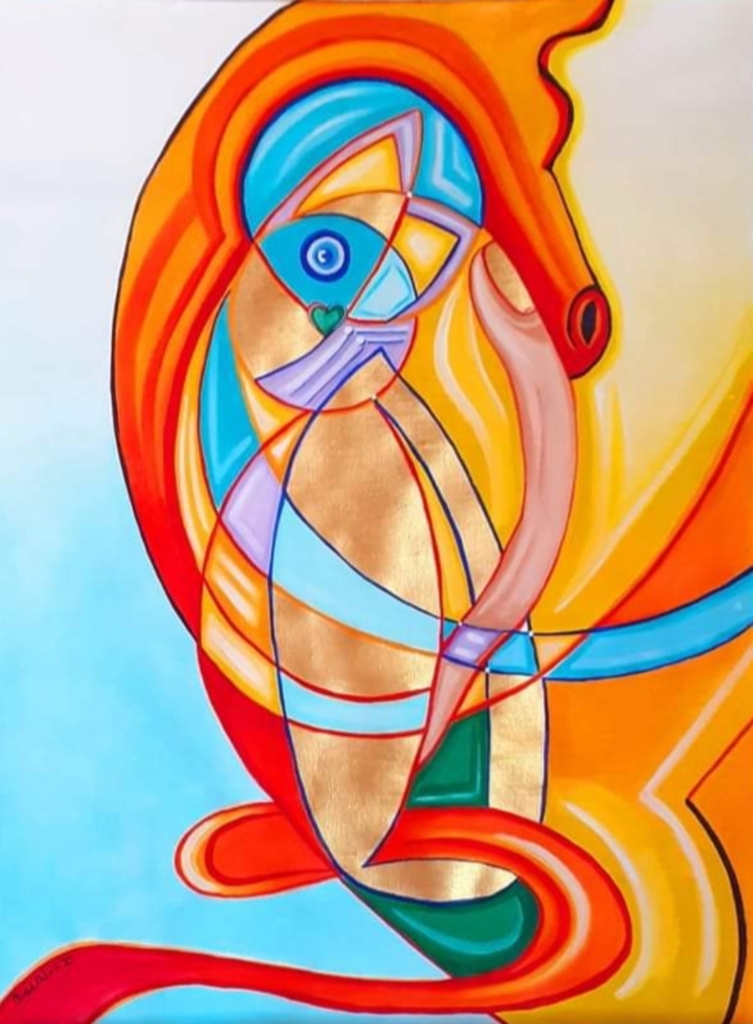
Spirito libero
allo stesso modo, il puzzle enigmatico dell’idolo della fantasia dell’artista attrae l’attenzione perché all’interno di quell’immagine misteriosa non possono fare a meno di fuoriuscire forme conosciute che sembrano richiedere allo sguardo di essere identificate, entrando in tal modo nell’universo interiore dell’artista che in virtù di quella composizione surreale svela una personalità curiosa, sfaccettata, poliedrica e attenta a tutto ciò che entra a far parte di quell’avventura fantastica che si chiama vita. Andiamo ora a conoscere meglio questa originale artista.
Vania, lei ha iniziato a dipingere da autodidatta, come ha avuto l’ispirazione di avvicinarsi a uno stile particolare, personalizzato, a metà tra Surrealismo e Orfismo con una gamma cromatica decisamente tendente alle atmosfere fiabesche?
Credo che l’ispirazione sia giunta a livello istintivo fin da giovanissima, sono praticamente nata con quel desiderio nel cassetto; poi è seguita la necessità di esprimere me stessa e di comunicare ciò che percepivo a livello interiore in modo che fosse funzionale al sublimare e completare il mio vivere quotidiano. Con il passare degli anni e dell’esperienza è poi maturato uno stile personalizzato spontaneo, che si è divenuto parte integrante del mio impulso espressivo e che ora mi rappresenta ogni opera. Il tutto mi nutre grazie a un’evoluzione costante e nasce da uno stato di presenza in un tempo dilatato, dove anche la mia vivace bambina interiore continua a vivere. Continua ad abbeverarsi da una coppa argentea di una pura libertà. In fondo sono convinta che un essere umano per lasciar emergere l’adulto non dovrebbe mai separarsi dal fanciullo che ha dentro di sé. Per me ogni disciplina creativa prende vita da quest’unione sacra che genera e libera ingegno e originalità.
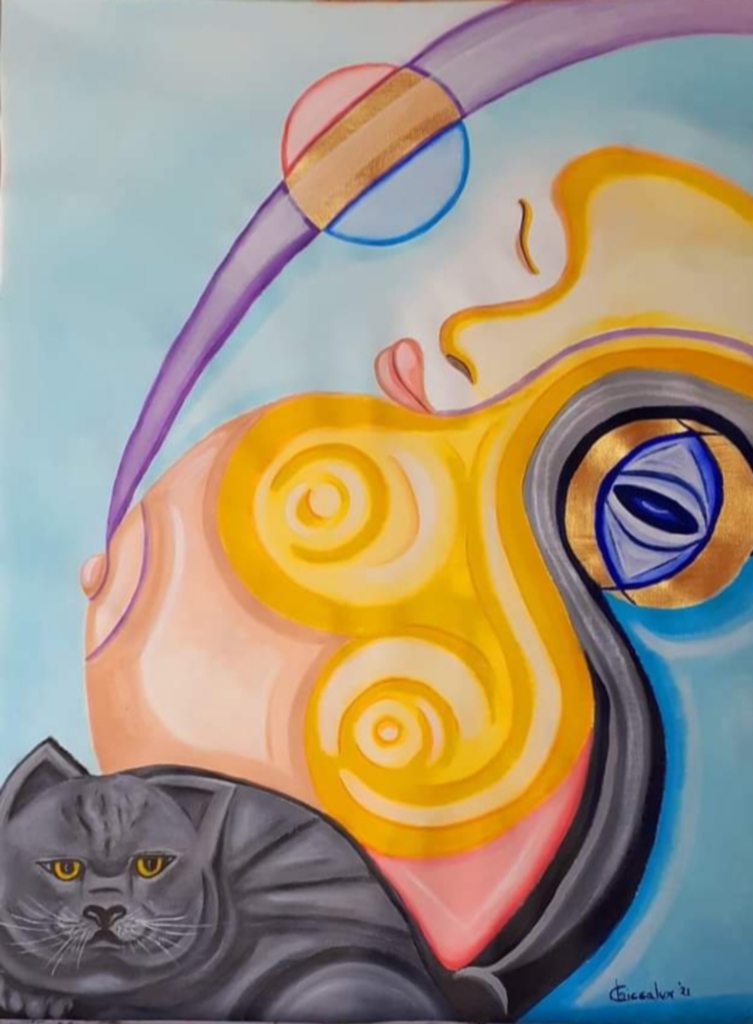
Luce al grigio
Il suo è un approccio espressivo particolare, fatto di frammenti di immagini e di connessione con le energie interiori che ne confondono i contorni e i limiti; quanto è importante nell’era contemporanea trovare un modo per evadere dalla realtà e rifugiarsi, inventandolo, in un mondo migliore?
In questa era e non solo, credo sia di vitale importanza creare non una via di fuga bensì uno spazio intimo, totalitario, dove tutto l’apparato del nostro quotidiano vivere possa manifestarsi in maniera libera, passionale, riempiendosi di realtà concrete ricche di emozioni, di sentimenti, di gioie, di dispiaceri, di pesantezza o leggerezza. Si può trovare un incontro e il senso del tutto. La pittura è per me una sfera in cui ricollocare i frammenti del vissuto tra presente e passato, osservando tutto dalla giusta prospettiva, lasciando che si manifestino secondo un divenire sempre nuovo e arricchente. In qualche modo sento di riuscire così a neutralizzare l’impatto emotivo tra mente e cuore dunque l’arte ha anche una funzione catartica.
Non solo artista bensì anche poetessa e creatrice di oggetti realizzati con elementi di riciclo; ci parla di queste altre due modalità espressive che la caratterizzano?
Per quel che riguarda la poesia è una realtà vissuta ed espressa solo da qualche anno. Ne ho pubblicate diverse partecipando a raccolte collettive e personali che mi hanno condotta a entrare in contatto con una realtà bellissima come il CET di Mogol, che considero un vero Maestro. Credo comunque sia un’estensione della realtà pittorica che non se ne distanzia anzi, piuttosto la completa. L’espressione poetica si manifesta in modo diverso, più immediato, non attraverso un ‘immagine creata a pennello attraverso forme e colori visibili, quello è un percorso semmai successivo. La poesia sgorga spontanea, ha già in sé le immagini e la gamma cromatica che però si esprime a parole dunque forse in qualche modo è più istintiva, prende e dona tutto con una priorità assoluta a cui ci si arrende.
Il riciclo invece è una passione perché mi affascina saper reinventare, recuperare, trasformare un qualsiasi oggetto o materiale. Ridare utilità a qualcosa regalandogli un nuovo aspetto, una nuova vita attraverso la bellezza e un’inedita utilità anche nel rispetto dell’ambiente. È un trasformare naturalmente e creativamente come in fondo madre natura ci insegna e fa da sempre.
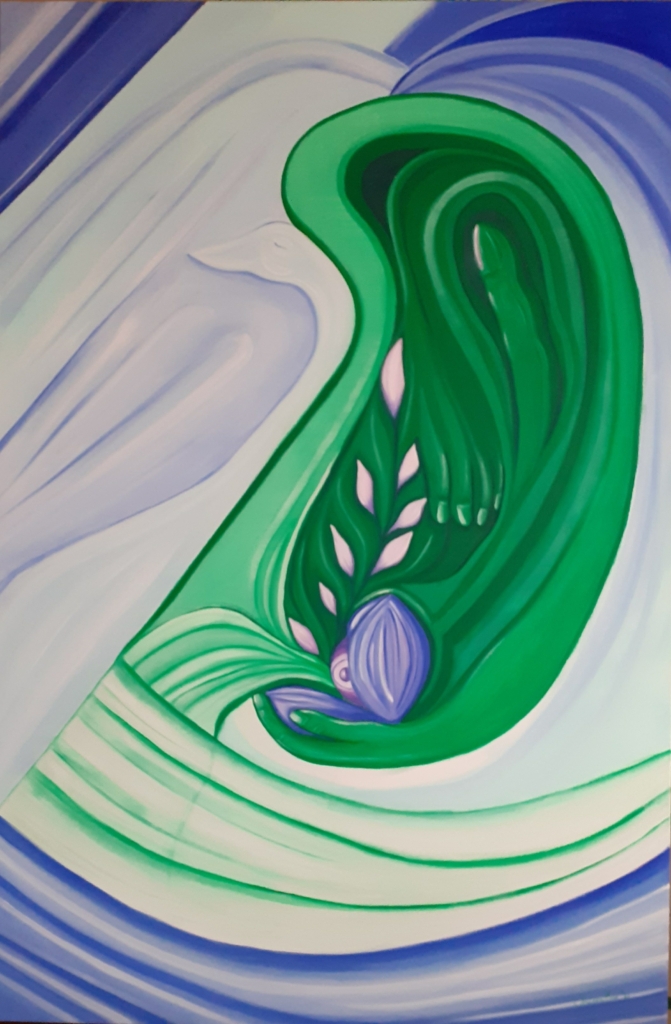
Schiusura
Quali sono i maestri del passato che l’hanno ispirata in questo suo particolare linguaggio pittorico?
Nei vari anni mi sono ispirata, avvicinata a più maestri del passato, credo anche per attrazione, affinità e bisogno di conoscere. Passando dall’essenzialità immediata e naturalezza dell’arte primitiva al linguaggio come celebrazione del classico che ora mi ricorda l’impronta più contemporanea della bellezza delle opere di I. Mitoraj che amo ed ho apprezzato tantissimo potendole vedere anche dal vivo. Credo che in un contesto evolutivo artistico si passi attraverso l’ammirazione di più artisti, da quelli più famosi e storicizzati sino ai contemporanei.
Ricordo un periodo in cui ero incantata dagli impressionisti, poi lo fui per la luce e per la cura dei dettagli di J. Vermeer; più tardi seguì un periodo durante il quale provai un interesse particolare per la tecnica ed i colori di Boccioni, fino ad apprezzare il linguaggio del surrealismo di S. Dalì.
Vorrei però sottolineare che mi ha sempre affascinato l’evoluzione poliedrica, geniale e vitale di Pablo Picasso. Quella sua caratteristica abilità nel trasformare le competenze e la maestria creativa in un approccio giocoso di libertà creativa che è andata ad accentuarsi nel corso degli anni mostrando una straordinaria capacità di smarcarsi da ogni schema prefissato. Lui sì che sapeva far uscire il bambino all’interno di sé dandogli spontaneità immaginativa che lo ha consacrato all’immortalità come un talento a tutta voce. In lui non c’era spazio per la banalità ma un’attenzione ed una presenza artistica molto consapevoli. In una mia fase di sperimentazione successiva mi avvicinai, tramite un critico che me lo fece scoprire, a Damien Hirst, di cui ho potuto approfondire la conoscenza visitando alcune sue mostre. In sostanza credo che tutti noi siamo attratti in modo più o meno consapevole da artisti e opere che raccontano e comunicano a livello istintivo con alcune parti di noi. Ogni forma d’arte è uno strumento che collega gli animi tra di loro attraverso molteplici strutture percettive e per chi desidera conoscere e conoscersi, rappresenta un metro di bellezza che può aiutare a spogliarci da pregiudizi e giudizi, può aiutare ad aprirsi mentalmente, a renderci più empatici, profondi, accoglienti ed emotivamente più vivi. L’arte ci invita ad ancorarci al bello che la vita può offrire in ogni istante, nonostante le difficoltà.

Libertà creativa
Lei partecipa a molte mostre collettive in Italia e in Europa, ci racconta dove i nostri lettori potranno vedere le sue opere nei prossimi mesi? Ha progetti importanti in programmazione?
Negli ultimi due anni, considerando il contesto legato alla pandemia, è stato più difficoltoso partecipare alle mostre anche perché ho anche un lavoro full-time in una realtà ospedaliera.
Tra una restrizione e l’altra ho affidato comunque alcune opere a dei professionisti a cui va la mia gratitudine, che con impegno hanno cercato di continuare a far camminare l’arte attraverso mostre anche itineranti a dispetto delle tante difficoltà oggettive ed organizzative. Ora continuerò in questa direzione e visto che il periodo attuale si sta appesantendo attraverso anche il nuovo conflitto militare, valuterò man mano. Rimane costante la necessità di esercitare l’attività creativa artistica e anche quella di lasciare aperto il cassetto dei desideri, e impegnarmi sul come realizzarli.
VANIA ERICA MASO-CONTATTI
Email: chiccalux@gmail.com
Facebook: https://www.facebook.com/ChiccaLux-517505541691196
Instagram: https://www.instagram.com/vaniaericamaso/
Marta Lock’s interviews:
Vania Maso, colour and improbable forms to unite reality and dream
Venetian, dreamer, enthusiastic about life and everything that is normally perceived as ordinary, but that under her prismatic gaze is transformed into an extraordinary world and experience, Vania Maso embarked on her artistic journey as a self-taught artist, listening to that irrepressible expressive impulse that cannot remain silent in a corner of her life. As time went by, the desire to perfect her instinctive technique and the need to learn the secrets of the masters on colour and pictorial line became more and more pressing, so she enrolled in many courses held by great artists in her area, learning to use in a more professional way the chromatic palette that was already part of her style. Although from that stage onwards her approach is inevitably more academic, she does not give up pursuing an entirely personal expressive path, because she has already experienced how important it is for her to stimulate the connection with her own unconscious, with that natural inclination that makes her tend towards an unusual, lively and positive chromatic range, and towards undefined shapes that only apparently maintain a figurative trait but that in reality push towards an imaginary that resembles more a surreal universe than something observable in everyday life. The indissoluble bond is the one that makes the impossible possible and vice versa, the one that is able to observe a completely different, colourful everyday life, a dream that can be realised thanks to the ability to release the emotions and sensations that allow the artist to look at everything through the filter of the soul. But more than anything else, what is essential for Vania Maso is to let her eclectic and at the same time reflective personality emerge, her sensitivity and her practical sense, the material world that cannot be detached from the spiritual one because it is in dualism that her character and creative nature find fulfilment; on the other hand, from the point of view of her pictorial approach, this tendency to unite his two souls, one more concrete and the other more dreamy, is overcome thanks to a simplicity and immediacy that reveal not only the artist’s solar character but also her point of view on the world, on the evolution necessary to discover every day the beauty it offers. The forms hidden in the non-form induce the observer to go deeper, without stopping at the pleasantness of the colours which, like a prism, facet and distinguish Maso’s canvases, but rather pushing into the indistinct and mysterious forms which, on closer inspection, conceal fragments of known realities; thus, entering the artist’s fantastic world becomes a fascinating journey, an experience in which the senses are involved but also the mind, which is stimulated to investigate the meanings that belong to the soul, to the feeling of the author of the artwork. The painting Volo libero (Free flight) therefore seems to be an extension of Vania Maso’s personality, of the essence that belongs to her and from which she cannot prescind, since it is precisely that freedom, that ability to break out of imposed schemes and generalised points of view, creating and cultivating her own, that allow her to follow her expressive instinct, her ability to seek a middle ground between reality and dream, between everything that is everyday and the impulse instead to filter every detail with her imagination, which is able to modify everything. Similarly, in Spirito libero (Free spirit), the enigmatic puzzle of the artist’s fantasy idol attracts attention because within that mysterious image known forms cannot fail to emerge and seem to require the gaze to identify them, thus entering the inner universe of the artist who, by virtue of that surreal composition, reveals a curious, multifaceted personality attentive to everything that becomes part of that fantastic adventure called life. Let us now get to know this original artist better.
Vania, you started painting as a self-taught artist. How did you get the inspiration to approach a particular, personalised style, halfway between Surrealism and Orphism, with a chromatic range decidedly tending towards fairy-tale atmospheres?
I think the inspiration came instinctively when I was very young, I was practically born with that desire in my drawer; then came the need to express myself and to communicate what I perceived on an inner level in a way that was functional to sublimate and complete my daily life. Over the years and with experience, a spontaneous personalised style has matured, which has become an integral part of my expressive impulse and now represents me in every artwork. Everything nourishes me through constant evolution and comes from a state of presence in a dilated time, where my lively inner child also continues to live. It continues to drink from a silvery cup of pure freedom. After all, I am convinced that a human being, in order to let the adult emerge, should never separate himself from the child within. For me, every creative discipline comes to life from this sacred union that generates and frees ingenuity and originality.
Yours is a particular expressive approach, made up of fragments of images and a connection with the inner energies that blur their contours and limits; how important is it in today’s age to find a way to escape from reality and take refuge in a better world by inventing it?
In this era and beyond, I believe it is vitally important to create not an escape route but an intimate, totalitarian space, where the whole apparatus of our daily lives can manifest itself freely, passionately, filling itself with concrete realities full of emotions, feelings, joys, sorrows, heaviness or lightness. A meeting and the sense of the whole can be found. For me, painting is a sphere in which I can place the fragments of my experience between the present and the past, observing everything from the right perspective, letting them manifest in an ever new and enriching way. Somehow I feel I can neutralise the emotional impact between mind and heart, so art also has a cathartic function.
You are not only an artist but also a poet and a creator of objects made from recycled materials; can you tell us about these two other modes of expression that characterise you?
About poetry I have only been living and expressing it for a few years. I have published several poems, taking part in collective and personal collections, which have brought me into contact with a wonderful organisation such as Mogol’s CET, which I consider a true master. However, I believe it is an extension of the pictorial reality that does not distance itself from it, but rather completes it. Poetic expression manifests itself in a different, more immediate way, not through an image created with a brush using visible shapes and colours, which is a later process. Poetry flows spontaneously, it already has images and a range of colours within it, but it is expressed in words, so perhaps it is somehow more instinctive, it takes and gives everything with an absolute priority to which we surrender.
Recycling, on the other hand, is a passion because I am fascinated by being able to reinvent, recover, transform any object or material. Giving something back its usefulness by donating it a new look, a new life through beauty and an unprecedented usefulness that also respects the environment. It is a natural and creative transformation, as Mother Nature has always taught us and done.
Who are the masters of the past who have inspired you in this particular pictorial language of yours?
Over the years, I have been inspired and approached several masters of the past, I believe also out of attraction, affinity and a need to know. Moving from the immediate essentiality and naturalness of primitive art to the language as a celebration of the classic, which now reminds me of the more contemporary imprint of the beauty of the artworks of I. Mitoraj, whom I love and have greatly appreciated having been able to see them live. I believe that in an artistic evolutionary context one goes through the admiration of several artists, from the most famous and historicised ones to the contemporaries. I remember a time when I was enchanted by the Impressionists, then I was enchanted by the light and attention to detail of J. Vermeer; later followed a period during which I felt a particular interest in the technique and colours of Boccioni, until I appreciated the language of S. Dali’s surrealism. However, I would like to underline that I have always been fascinated by Pablo Picasso’s multifaceted, brilliant and vital evolution. His characteristic ability to transform skills and creative mastery into a playful approach of creative freedom that has been accentuated over the years, showing an extraordinary ability to break free from any predefined scheme. He knew how to bring out the child within himself, giving him spontaneous imagination that consecrated him to immortality as a talent in full voice. In him there was no room for banality but a very conscious attention and artistic presence. In a later phase of my experimentation, I approached Damien Hirst through a critic who introduced me to him, and I was able to learn more about him by visiting some of his exhibitions. Basically, I believe that we are all attracted, to a greater or lesser extent consciously, to artists and paintings that tell and communicate on an instinctive level with certain parts of us. Every form of art is a tool that connects souls through multiple perceptive structures and for those who wish to know and get to know each other, it represents a measure of beauty that can help strip us of prejudices and judgments, it can help open us up mentally, make us more empathetic, profound, welcoming and emotionally more alive. Art invites us to anchor ourselves in the beauty that life has to offer at every moment, despite the difficulties.
You have taken part in many group exhibitions in Italy and Europe. Can you tell us where our readers will be able to see your artworks in the coming months? Do you have any important projects in the pipeline?
In the last two years, considering the context related to the pandemic, it has been more difficult to participate in exhibitions, also because I also have a full-time job in a hospital.
However, between one restriction and another, I have entrusted some of my artworks to professionals to whom I am grateful, who have tried to continue to promote art through exhibitions, including touring exhibitions, despite the many objective and organisational difficulties. Now I will continue in this direction and, given that the current period is getting heavier, also due to the new military conflict, I will evaluate as I go along. The need to exercise creative artistic activity remains constant, as does the need to leave the drawer of desires open, and to work on how to realise them.
